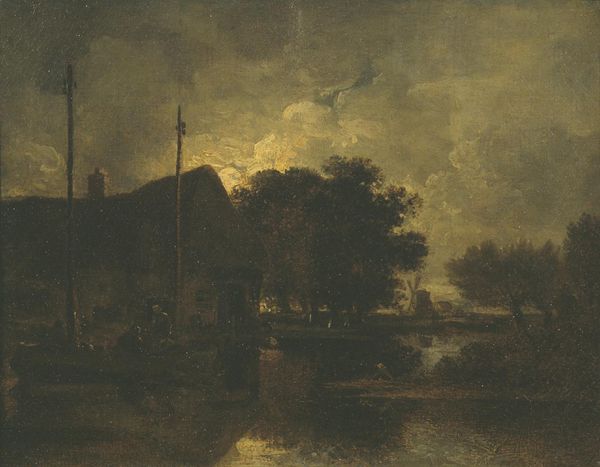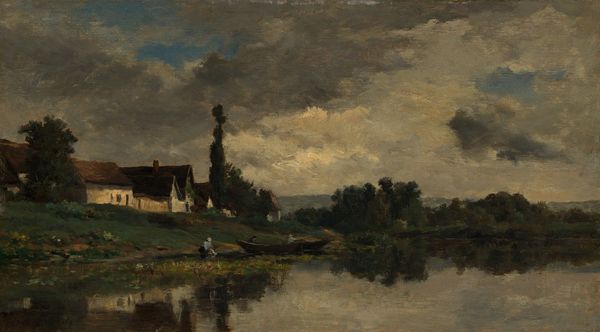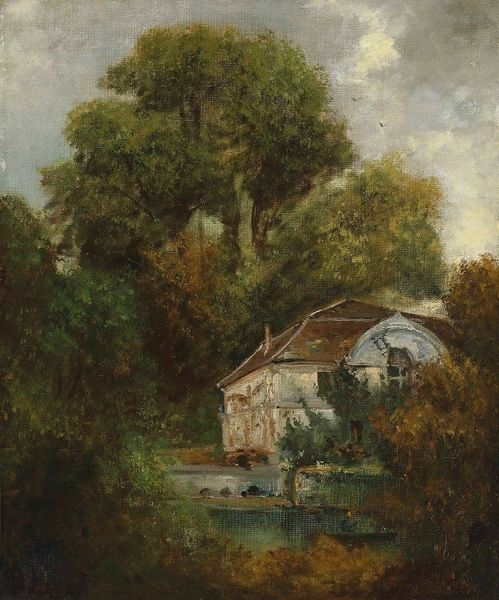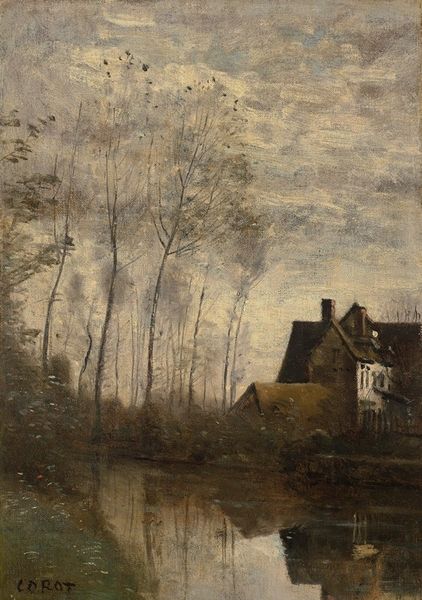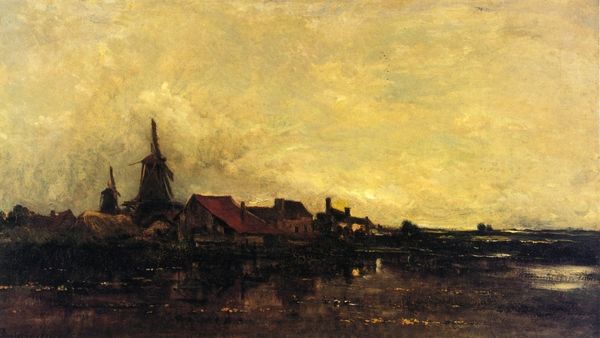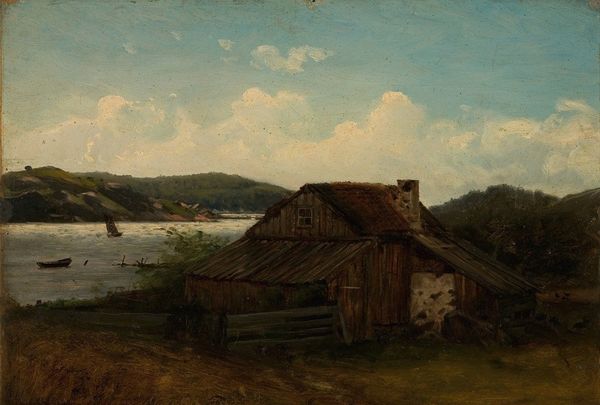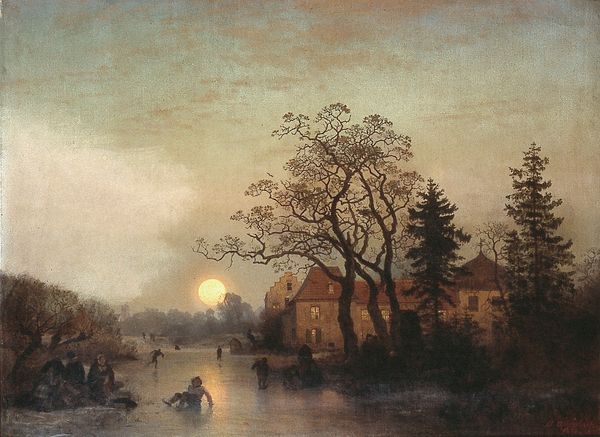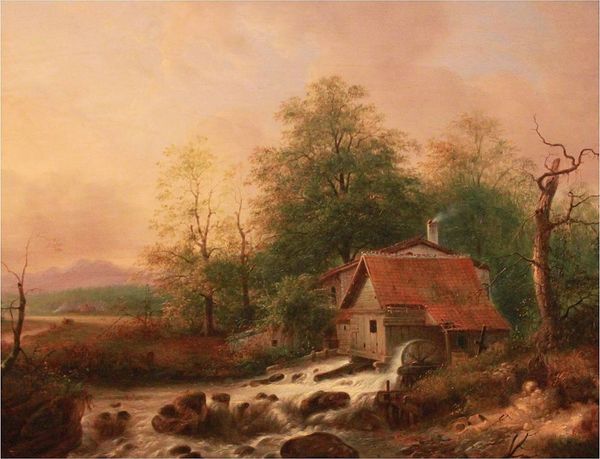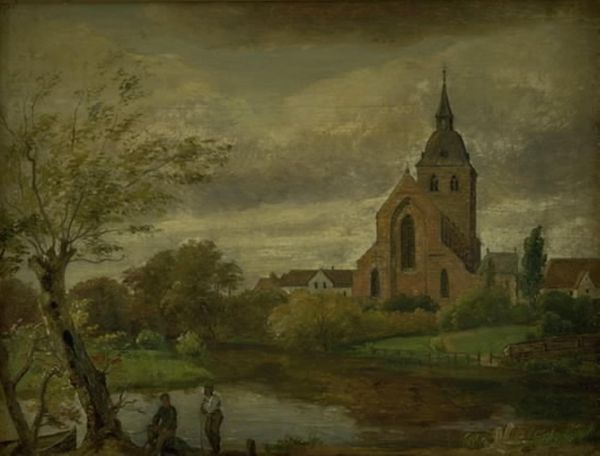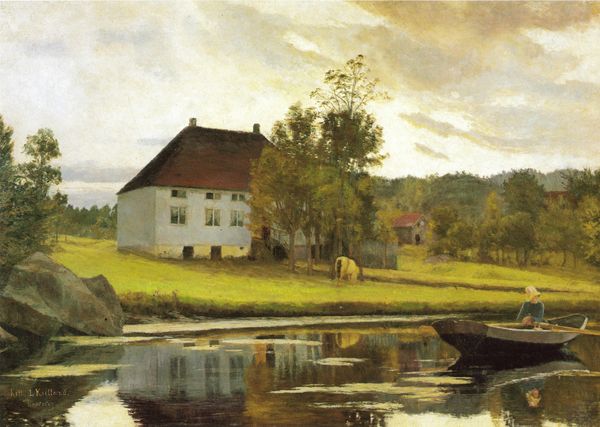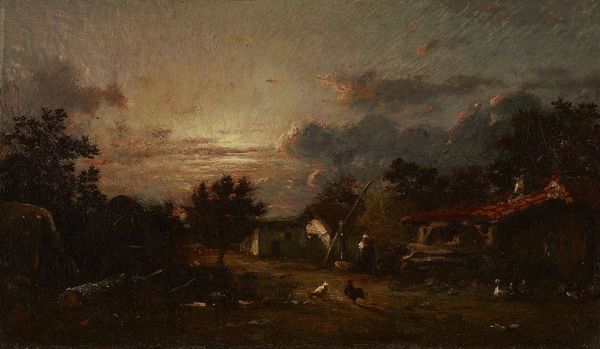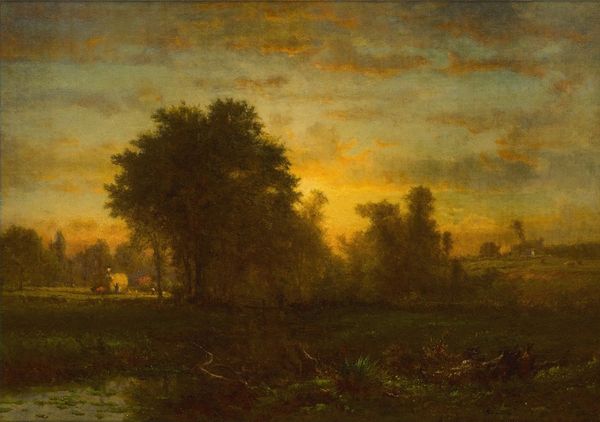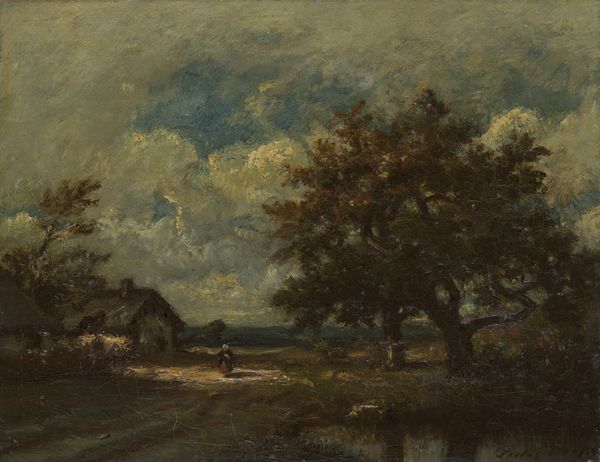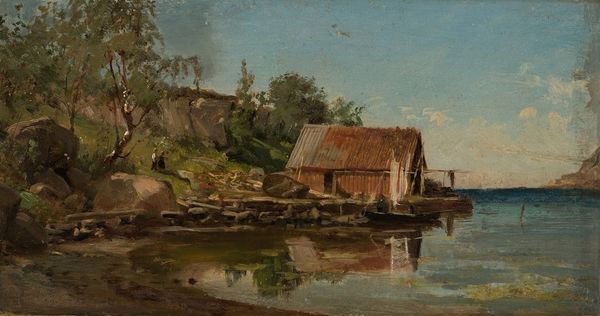
Dimensions: 33.3 x 48 cm
Copyright: Public domain
Editor: This is "Lake Lucerne, Switzerland" painted in 1856 by Albert Bierstadt, using oil on canvas. It has a certain stillness to it, almost eerie. What grabs your attention when you look at it? Curator: Well, let's consider the materiality. Oil paint, in 1856, wasn't just a neutral medium. Its very accessibility speaks to the rising merchant class who were both consumers and subjects within such landscapes. Did Bierstadt grind his own pigments? Employ assistants? These labor decisions, these hands involved in its making, all contribute to the final piece and its cultural standing. Editor: I never thought about it that way! I suppose I usually just see the finished product. What about his choice of subject matter, a specific location like Lake Lucerne? Curator: The site matters, of course. Switzerland, in the mid-19th century, wasn't just a pretty picture; it was a burgeoning tourist destination. So we have to ask: who is the painting for? Are these future middle class tourists admiring their next destination, or those from the upper crust flaunting their most recent conquest. By documenting this scenery, is Bierstadt catering to this emerging desire to consume nature through visual representation and commodity? Editor: So it's not just about the aesthetic beauty of the lake. It reflects economic and social changes of the time. That’s interesting. Curator: Precisely! The dark palette suggests it was for inside display. It also might require multiple viewings, as the observer became more keen to its intricacies of nature and leisure. With each viewing, there is the potential for another experience with this beautiful Swiss town and lakeside. Do you see the ways the brushstrokes attempt to portray the soft lapping of the water on the beach? It beckons... Editor: I do now! Looking at art in this way definitely makes me think more deeply. Thanks! Curator: Likewise! By studying not just what is depicted, but *how* and *why* it was made, we gain insight into a whole cultural moment.
Comments
No comments
Be the first to comment and join the conversation on the ultimate creative platform.
